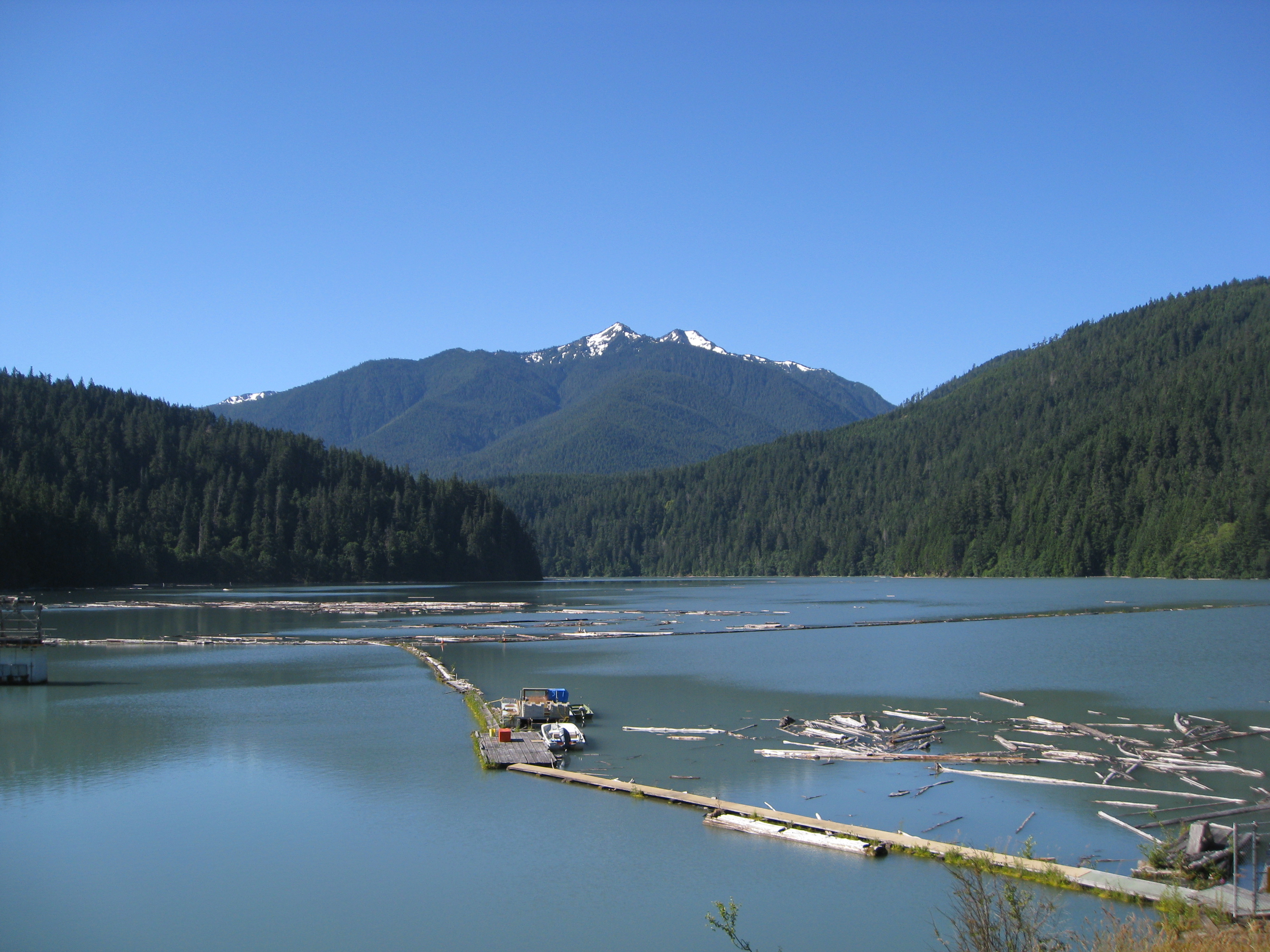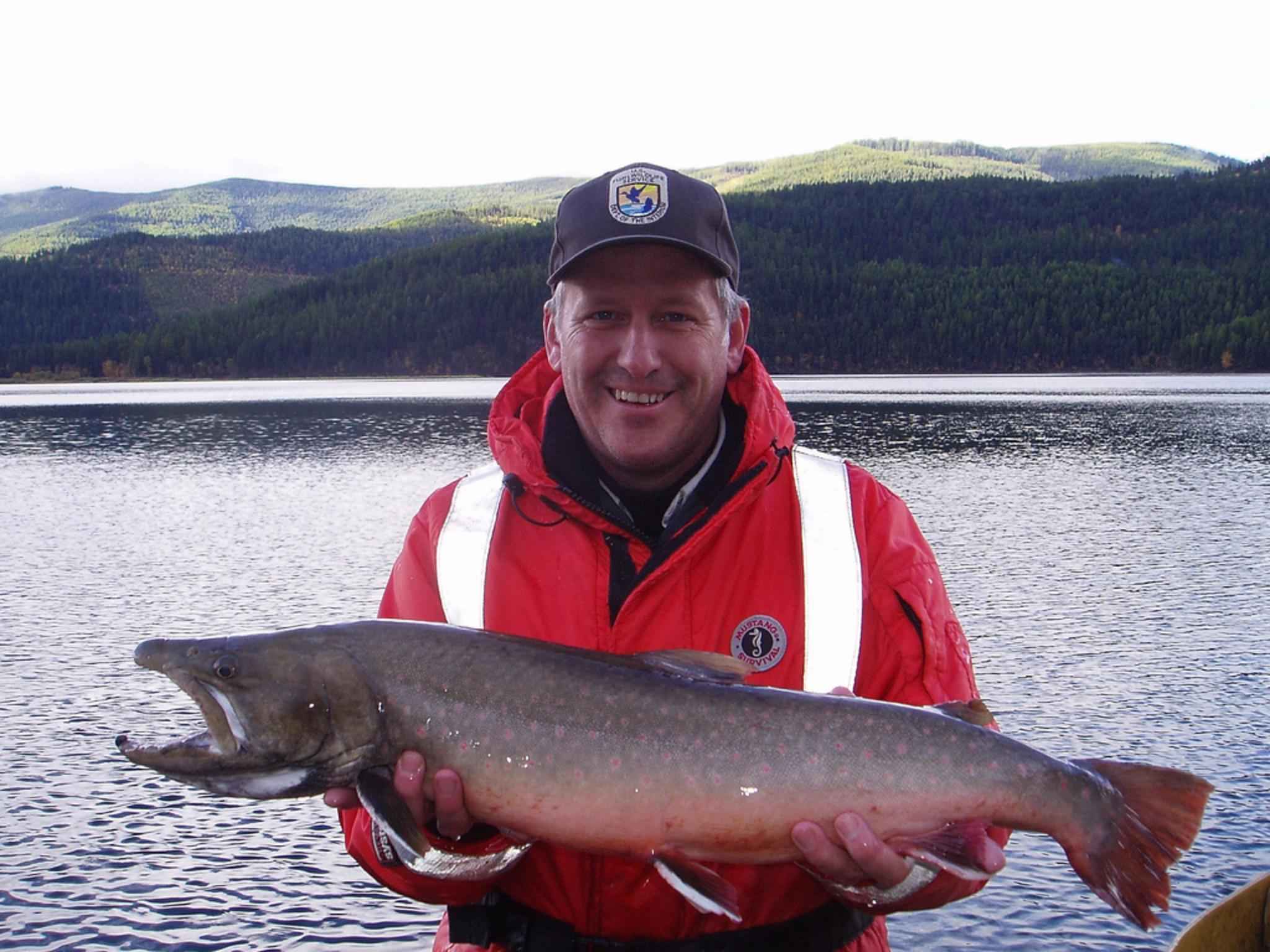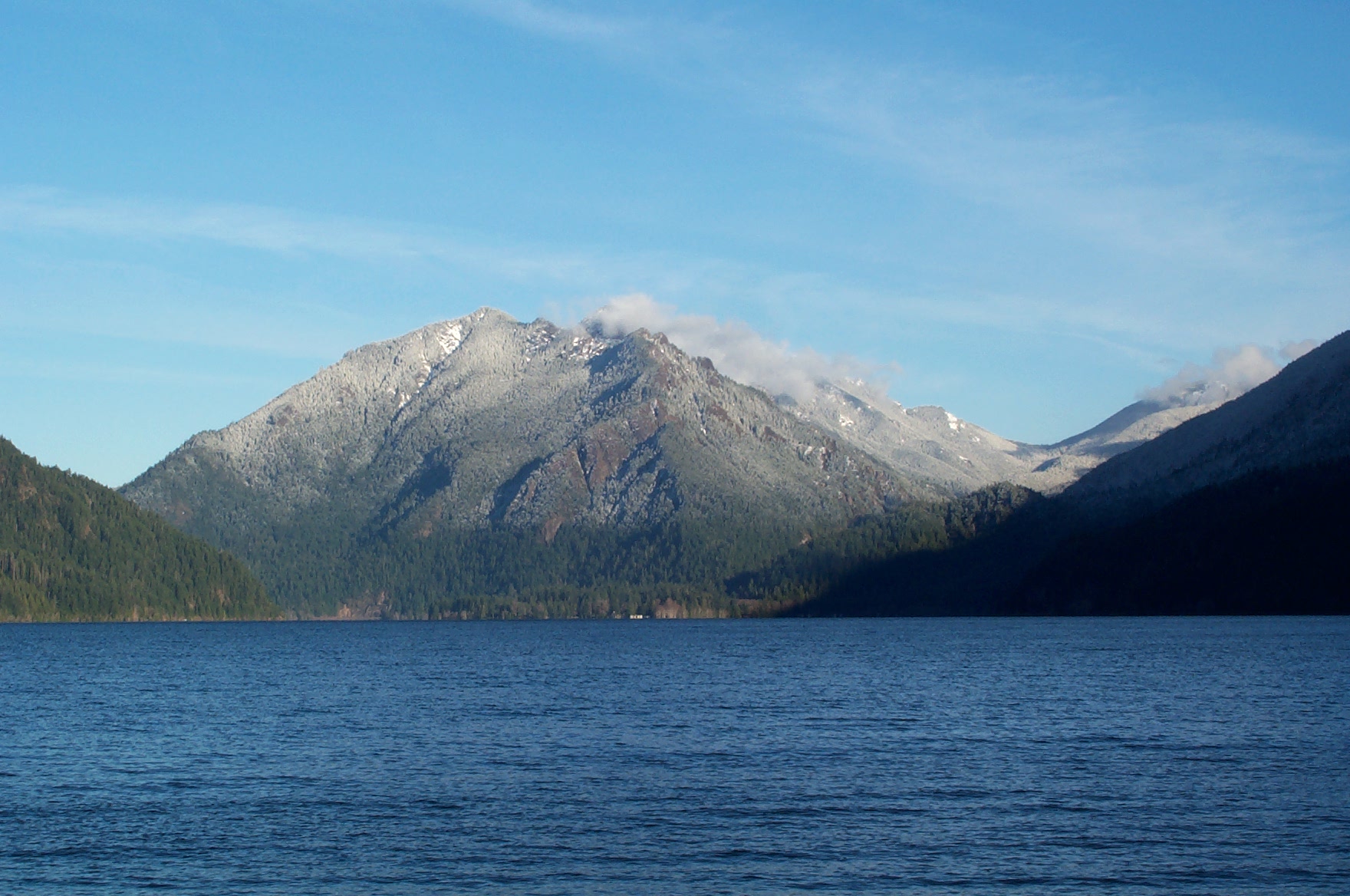|
Lake Aldwell
Lake Aldwell was a reservoir located about from the mouth of the Elwha River on the Olympic Peninsula in the U.S. state of Washington. The reservoir was created in 1913 behind the Elwha Dam, which was fully removed in 2012. The Elwha Dam blocked at least of fish habitat for Pacific Salmon and steelhead within Olympic National Park. Fish population Lake Aldwell was home to a population of kokanee sockeye salmon from Indian Creek and Lake Sutherland which, unable to access the Pacific Ocean, used the reservoir as their habitat during their adult lives. These salmon accessed the reservoir via Indian Creek and spawned in Lake Sutherland, just below Lake Crescent. The lake also contained bull trout The bull trout (''Salvelinus confluentus'') is a char of the family Salmonidae native to northwestern North America. Historically, ''S. confluentus'' has been known as the " Dolly Varden" (''S. malma''), but was reclassified as a separate speci ..., rainbow trout, and a population ... [...More Info...] [...Related Items...] OR: [Wikipedia] [Google] [Baidu] |
Elwha Dam
The Elwha Dam was a 108-ft (33 m) high dam located in the United States, in the state of Washington, on the Elwha River approximately upstream from the mouth of the river on the Strait of Juan de Fuca. The Elwha River Ecosystem and Fisheries Restoration Act of 1992 authorized the US Federal Government to acquire the Elwha Dam and Glines Canyon Dam hydroelectric power projects for decommissioning and demolition for habitat restoration. Removal of the Elwha Dam began in September 2011 and was fully complete by March 2012, allowing the Elwha River to flow freely through the site. Construction The dam was built under the direction of Thomas Aldwell. He previously bought up tracts of land around the river, and with the help of Canadian financier George Glines, began construction of the Elwha Dam in 1910. Aldwell and his contractors cut corners on constructing the dam, including illegally not building fish passages and not securing it to the bedrock. Thus, in 1912, as the reservo ... [...More Info...] [...Related Items...] OR: [Wikipedia] [Google] [Baidu] |
Lake Sutherland
Lake Sutherland is located on the Olympic Peninsula about west of Port Angeles, Washington. The lake is located just to the east of Lake Crescent. Lake Sutherland drains into Indian Creek, which is a tributary of the Elwha River The Elwha River is a river on the Olympic Peninsula in the U.S. state of Washington. From its source at Elwha snowfinger in the Olympic Mountains, it flows generally north to the Strait of Juan de Fuca. Most of the river's course is within the O .... Lake Sutherland is named for the Canadian fur trapper John Sutherland who, with John Everett, explored the lake around 1865. Lake Sutherland and Indian Creek once sustained anadromous fish populations, but construction of the Elwha Dam in 1913 blocked access to the ocean, eliminating several salmon species from Indian Creek and landlocking others. The lake contains a population of kokanee sockeye salmon, which spawn in Lake Sutherland and until the removal of the Elwha Dam in 2012 migrated to Lake ... [...More Info...] [...Related Items...] OR: [Wikipedia] [Google] [Baidu] |
Lakes Of Clallam County, Washington
A lake is an area filled with water, localized in a basin, surrounded by land, and distinct from any river or other outlet that serves to feed or drain the lake. Lakes lie on land and are not part of the ocean, although, like the much larger oceans, they do form part of the Earth's water cycle. Lakes are distinct from lagoons, which are generally coastal parts of the ocean. Lakes are typically larger and deeper than ponds, which also lie on land, though there are no official or scientific definitions. Lakes can be contrasted with rivers or streams, which usually flow in a channel on land. Most lakes are fed and drained by rivers and streams. Natural lakes are generally found in mountainous areas, rift zones, and areas with ongoing glaciation. Other lakes are found in endorheic basins or along the courses of mature rivers, where a river channel has widened into a basin. Some parts of the world have many lakes formed by the chaotic drainage patterns left over from the last ic ... [...More Info...] [...Related Items...] OR: [Wikipedia] [Google] [Baidu] |
Reservoirs In Washington (state)
A reservoir (; from French ''réservoir'' ) is an enlarged lake behind a dam. Such a dam may be either artificial, built to store fresh water or it may be a natural formation. Reservoirs can be created in a number of ways, including controlling a watercourse that drains an existing body of water, interrupting a watercourse to form an embayment within it, through excavation, or building any number of retaining walls or levees. In other contexts, "reservoirs" may refer to storage spaces for various fluids; they may hold liquids or gasses, including hydrocarbons. ''Tank reservoirs'' store these in ground-level, elevated, or buried tanks. Tank reservoirs for water are also called cisterns. Most underground reservoirs are used to store liquids, principally either water or petroleum. Types Dammed valleys Dammed reservoirs are artificial lakes created and controlled by a dam constructed across a valley, and rely on the natural topography to provide most of the basin of the re ... [...More Info...] [...Related Items...] OR: [Wikipedia] [Google] [Baidu] |
Anadromous
Fish migration is mass relocation by fish from one area or body of water to another. Many types of fish migrate on a regular basis, on time scales ranging from daily to annually or longer, and over distances ranging from a few metres to thousands of kilometres. Such migrations are usually done for better feeding or to reproduce, but in other cases the reasons are unclear. Fish migrations involve movements of schools of fish on a scale and duration larger than those arising during normal daily activities. Some particular types of migration are ''anadromous'', in which adult fish live in the sea and migrate into fresh water to spawn; and ''catadromous'', in which adult fish live in fresh water and migrate into salt water to spawn. Marine forage fish often make large migrations between their spawning, feeding and nursery grounds. Movements are associated with ocean currents and with the availability of food in different areas at different times of year. The migratory movements ma ... [...More Info...] [...Related Items...] OR: [Wikipedia] [Google] [Baidu] |
Elwha Ecosystem Restoration
The Elwha Ecosystem Restoration Project is a 21st-century project of the U.S. National Park Service to remove two dams on the Elwha River on the Olympic Peninsula in Washington state, and restore the river to a natural state. It is the largest dam removal project in history and the second largest ecosystem restoration project in the history of the National Park Service, after the Restoration of the Everglades. The controversial project, costing about $351.4 million, has been contested and periodically blocked for decades. It has been supported by a major collaboration among the Lower Elwha Klallam Tribe, and federal and state agencies. The removal of the first of the two dams, the Elwha Dam, began in September 2011 and was completed ahead of schedule in March 2012. Removal of the second dam, the Glines Canyon Dam, was completed on August 26, 2014. History of the Elwha River Historically, the Elwha River was one of the few rivers in the contiguous United States that supported ... [...More Info...] [...Related Items...] OR: [Wikipedia] [Google] [Baidu] |
Brook Trout
The brook trout (''Salvelinus fontinalis'') is a species of freshwater fish in the char genus ''Salvelinus'' of the salmon family Salmonidae. It is native to Eastern North America in the United States and Canada, but has been introduced elsewhere in North America, as well as to Iceland, Europe, and Asia. In parts of its range, it is also known as the eastern brook trout, speckled trout, brook charr, squaretail, brookie or mud trout, among others. A potamodromous population in Lake Superior, as well as an anadromous population in Maine, is known as coaster trout or, simply, as coasters. The brook trout is the state fish of nine U.S. states: Michigan, New Hampshire, New Jersey, New York, North Carolina, Pennsylvania, Vermont, Virginia, and West Virginia, and the Provincial Fish of Nova Scotia in Canada. Systematics and taxonomy The brook trout was first scientifically described as ''Salmo fontinalis'' by the naturalist Samuel Latham Mitchill in 1814. The specific epithet "''fontina ... [...More Info...] [...Related Items...] OR: [Wikipedia] [Google] [Baidu] |
Rainbow Trout
The rainbow trout (''Oncorhynchus mykiss'') is a species of trout native to cold-water tributaries of the Pacific Ocean in Asia and North America. The steelhead (sometimes called "steelhead trout") is an anadromous (sea-run) form of the coastal rainbow trout or Columbia River redband trout that usually returns to freshwater to spawn after living two to three years in the ocean. Freshwater forms that have been introduced into the Great Lakes and migrate into tributaries to spawn are also called steelhead. Adult freshwater stream rainbow trout average between , while lake-dwelling and anadromous forms may reach . Coloration varies widely based on subspecies, forms, and habitat. Adult fish are distinguished by a broad reddish stripe along the lateral line, from gills to the tail, which is most vivid in breeding males. Wild-caught and hatchery-reared forms of the species have been transplanted and introduced for food or sport in at least 45 countries and every continent except ... [...More Info...] [...Related Items...] OR: [Wikipedia] [Google] [Baidu] |
Bull Trout
The bull trout (''Salvelinus confluentus'') is a char of the family Salmonidae native to northwestern North America. Historically, ''S. confluentus'' has been known as the " Dolly Varden" (''S. malma''), but was reclassified as a separate species in 1980. Bull trout are listed as a threatened species under the U.S. Endangered Species Act (1998) and as vulnerable on the IUCN Red List of Threatened Species. Description Like other species of char, the fins of a bull trout have white leading edges. Its head and mouth are unusually large for salmonids, giving it its name. Bull trout have been recorded measuring up to in length and weighing . Bull trout may be either migratory, moving throughout large river systems, lakes, and the ocean, or they may be resident, remaining in the same stream their entire lives. Migratory bull trout are typically much larger than resident bull trout, which rarely exceed . Bull trout can be differentiated from brook trout (''S. fontinalis'') by the absen ... [...More Info...] [...Related Items...] OR: [Wikipedia] [Google] [Baidu] |
Lake Crescent
Lake Crescent is a deep lake located entirely within Olympic National Park in Clallam County, Washington, United States, approximately west of Port Angeles on U.S. Route 101 and nearby to the small community of Piedmont. At an official maximum depth of it is officially the second deepest lake in Washington (after Lake Chelan). Unofficial depth measurements of more than have been rumored in the region for years, although this figure has recently been proven false after a lake-wide bathymetric survey was performed from 2013 to 2014 by Eian Ray and Jeff Enge. The results of this survey showed the maximum depth as being 596 feet. Using GIS statistical analysis, this survey also showed the lake contains approximately 0.5 cubic miles of fresh water. Lake Crescent is known for its brilliant blue waters and exceptional clarity, caused by a lack of nitrogen in the water which inhibits the growth of algae. It is located in a popular recreational area that is home to several trails, ... [...More Info...] [...Related Items...] OR: [Wikipedia] [Google] [Baidu] |
Pacific Ocean
The Pacific Ocean is the largest and deepest of Earth's five oceanic divisions. It extends from the Arctic Ocean in the north to the Southern Ocean (or, depending on definition, to Antarctica) in the south, and is bounded by the continents of Asia and Oceania in the west and the Americas in the east. At in area (as defined with a southern Antarctic border), this largest division of the World Ocean—and, in turn, the hydrosphere—covers about 46% of Earth's water surface and about 32% of its total surface area, larger than Earth's entire land area combined .Pacific Ocean . '' Britannica Concise.'' 2008: Encyclopædia Britannica, Inc. The centers of both the |
Indian Creek (Elwha River)
Indian Creek is a tributary of the Elwha River located in Washington (U.S. state), Washington in the United States. Indian Creek flows from Lake Sutherland into the former Lake Aldwell. Historically, Indian Creek supported runs of several anadromous salmon and trout species, including all five species of Pacific Salmon. However, with construction of the Elwha Dam in 1913, fish were blocked from accessing the Pacific Ocean. While the Elwha Dam was in operation, Indian Creek sustained populations of kokanee sockeye salmon, which spawned in Lake Sutherland and migrated to Lake Aldwell to use as their ocean. It also contained stream resident rainbow trout, coastal rainbow trout, coastal cutthroat trout, and introduced eastern brook trout. With the removal of the Elwha Dam in 2012, the native Salmonidae, salmonids began a return to their anadromous lifestyle, with spawning activities of true anadromous Chinook salmon observed in late 2013. See also *List of rivers of Washington Refer ... [...More Info...] [...Related Items...] OR: [Wikipedia] [Google] [Baidu] |










.jpg)